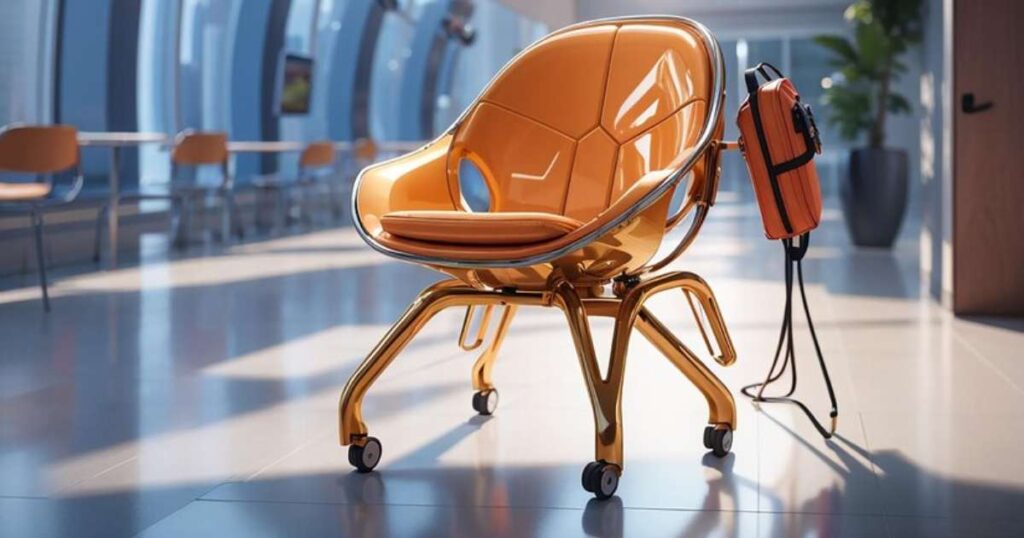Folding chairs – those unassuming yet brilliant inventions that have become an integral part of our lives, offering portability, versatility, and convenience at every turn.
From classrooms and auditoriums to backyard gatherings and camping trips, these compact seating solutions have revolutionized the way we approach events and gatherings.
But have you ever stopped to ponder the captivating origins of this ingenious invention?
Join us on a fascinating journey through history as we unravel the tale of the folding chair, tracing its evolution from ancient civilizations to modern-day innovation, and exploring the profound impact it has had on society’s ability to adapt and accommodate in any setting.
The Ancient Origins of Folding Chairs
Ancient civilizations traced the concept of folding chairs back to their need for portable and collapsible seating solutions.
These early prototypes paved the way for the modern folding chair we know and love today.
Egyptian Influence
People have long renowned Ancient Egyptians for their innovative designs, and their influence on folding chairs is undeniable.
Archeological evidence suggests that folding stools, crafted from wood and adorned with intricate carvings, were commonplace in Egyptian households.
These early collapsible seats were not only functional but also a symbol of status and artistic expression.
Greek and Roman Contributions
The Greeks and Romans also played a significant role in the development of folding chairs.
The curule chair, a symbol of political power and authority, was a type of folding chair used by high-ranking officials during public events and ceremonies.
Craftsmen made these chairs of wood and featured leather seats and backrests, allowing for easy portability and storage.
Medieval Folding Chairs
As we delve into the medieval era, we discover a rich tapestry of folding chair designs that catered to the nobility’s needs.
These chairs were not only functional but also showcased the artistry and craftsmanship of the time.
Crafted from sturdy oak or other hardwoods, medieval folding chairs boasted intricate carvings that depicted religious symbols, animals, and scenes from nature.
The seats and backrests were often upholstered with luxurious fabrics, providing comfort and opulence.
Despite their ornate appearance, these chairs were designed to be portable and easy to store, making them ideal for banquets, outdoor events, and travel.
Modern Invention of Folding Chairs

Folding chairs have a rich history, evolving from early designs to modern innovations. In 1855, John Cham’s patented design set a new standard with its wooden frame and collapsible fabric seat and back.
This sparked a wave of advancements, including Philip E.G. Harrison’s introduction of a metal-framed chair in 1931. Fredric Arnold’s 1947 aluminum model further revolutionized mass production.
These innovations led to a flourishing industry, with companies like Arnold’s meeting the soaring demand for portable and versatile seating solutions.
John Cham’s Patent Folding Chair
While folding chairs had been around for centuries, it was not until 1855 that the modern folding chair as we know it today was patented. John Cham, an inventor from England, is credited with this groundbreaking design.
His armless chair featured a wooden frame and a fabric seat and back, making it both collapsible and comfortable.
Improvements Over Time
Cham’s design paved the way for numerous improvements and innovations in the world of folding chairs. In 1931, Philip E.G.
Harrison patented the first modern folding chair with a metal frame and fabric seat and back.
However, mass production remained a challenge until 1947, when Fredric Arnold created the first aluminum folding chair with fabric strapping for the seat and back.
From there, the folding chair industry rapidly evolved, with manufacturers like the Fredric Arnold Company of Brooklyn, New York, producing thousands of chairs per day by 1957.
Today, folding chairs are available in a wide range of materials, including hard plastic, metal, and wood, catering to diverse needs and preferences.
Impact of Folding Chairs on Society
The invention and widespread adoption of folding chairs have had a profound impact on society, revolutionizing the way we approach seating in various settings.
Versatility
One of the most significant impacts of folding chairs is their unparalleled versatility. You can use these compact and lightweight seating solutions indoors or outdoors, making them suitable for a wide range of events and gatherings.
From school assemblies to outdoor weddings, folding chairs provide a flexible and adaptable seating option that can be easily set up and taken down.
Accessibility
Folding chairs have also played a crucial role in promoting accessibility and inclusivity. These chairs have made it easier for individuals with mobility challenges to attend events and gatherings by providing additional seating options that can be quickly deployed.
This has fostered a more inclusive environment, ensuring that everyone can participate and feel welcome.
Cost-Effective
In addition to their versatility and accessibility, folding chairs offer a cost-effective seating solution.
Compared to traditional chairs, folding chairs are generally more affordable, making them an attractive option for organizations and individuals operating on a budget.
Their durability and ease of replacement further contribute to their cost-effectiveness, making them a smart investment for any setting.
Innovation
The invention of folding chairs has also spurred innovation in the seating industry. Designers and manufacturers are constantly exploring new materials, designs, and features. Folding chairs have evolved to meet the ever-changing needs of consumers.
From ergonomic designs to weather-resistant materials, the folding chair has become a canvas for innovative thinking and problem-solving.
Also Read This Post:
5 Walmart Tiny Homes To Make Your Dreams A Big Reality
FAQ’s
Who invented the first modern folding chair?
People credit John Cham, an inventor from England, with inventing and patenting the first modern folding chair in 1855.
What were medieval folding chairs made of?
Typically, craftsmen crafted medieval folding chairs from hardwoods like oak, featuring intricate carvings and fabric upholstery.
Why are folding chairs considered versatile?
Folding chairs are versatile because people can use them indoors or outdoors, easily set them up and take them down, and they are lightweight and portable.
How have folding chairs contributed to accessibility?
Folding chairs have made it easier for individuals with mobility challenges to attend events and gatherings. They provide additional seating options that can be quickly deployed.
What makes folding chairs cost-effective?
Folding chairs are generally more affordable than traditional chairs, durable, and easy to replace, making them a cost-effective seating solution.
Final Thougths
The folding chair, a humble yet ingenious invention, has come a long way from its ancient origins.
From the collapsible stools of ancient Egypt to the ornate designs of medieval times, this convenient seating solution has evolved. Finally, it has transformed into the modern, mass-produced chairs we know today, leaving an indelible mark on our lives.
Its ability to adapt to changing needs, provide accessibility, and offer cost-effective solutions has made it an indispensable part of our society.
As we look to the future, the folding chair will undoubtedly continue to evolve. However, its core purpose – to provide portable and versatile seating – will remain unchanged.







